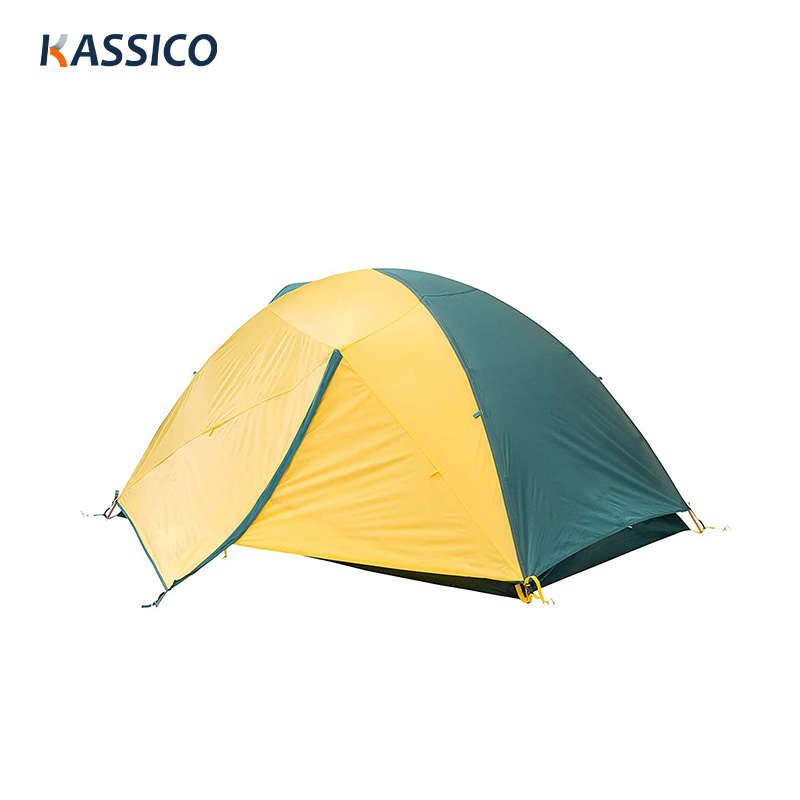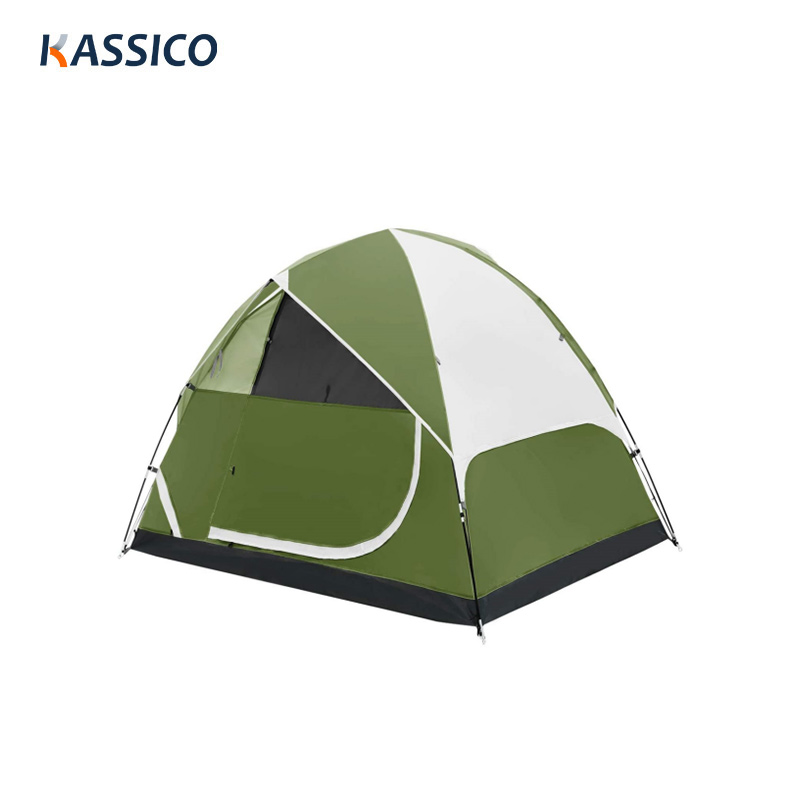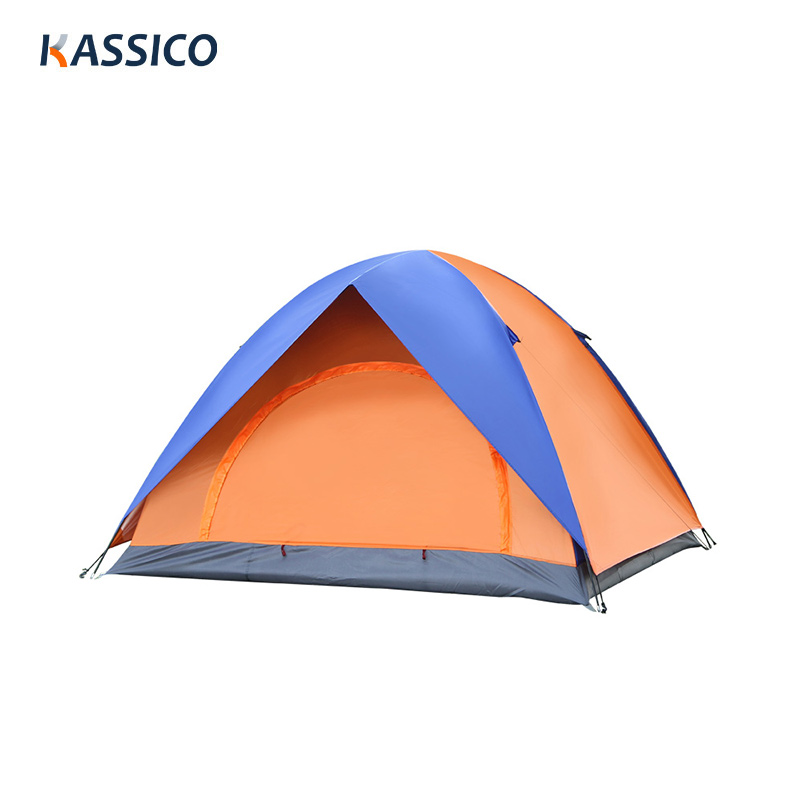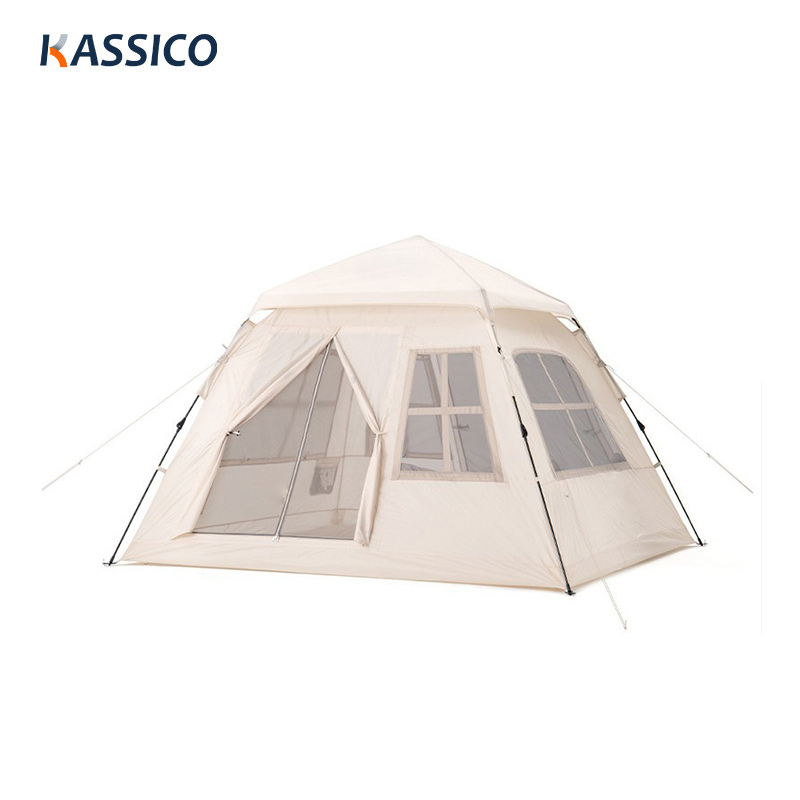A tent is a very ordinary travel equipment. There are many types of tents, including dozens of rescue tents, military tents, camp tents, insulation tents, travel tents, entertainment tents, and more.
We don't usually use that many types at all. So, what kind of tent should we choose for the tents that ordinary people use in their daily lives? Our daily tents are generally divided into two categories: professional tents and leisure tents.
1. Professional Tent
What is a professional tent? A professional tent is also a seasonal tent, which means it has a tent that can be used all day in cold areas. It has properties such as rain resistance, snow resistance, sun protection, wind resistance, warmth preservation, heat insulation, waterproof and moisture-proof, and mosquito resistance. It can be used anywhere in high mountains, snowy areas, mountain plains, and other areas, and is suitable for complex climate environments such as hiking and exploration.
No matter what tent, there is a very important index called waterproofing index, which refers to the use of a certain number of static water columns pressed on the tent, and then water droplets happen to seep in. For example, when there is a static water pressure of 1000MM, water droplets will seep out, so the waterproof index of this tent is PU1000.
Tents with a waterproof index of 800MM-1200MM can prevent light to moderate rain;
Tents with a waterproof index of 1500MM-3000MM can prevent moderate to heavy rain;
Tents with a waterproof index of over 3000MM are generally treated with technologies such as high temperature and cold resistance, and can be used in various environments.
Professional tents are suitable for adventure enthusiasts and mountaineers because they require travel, sleep, and even short-term living in special or even harsh environments. These hobbies are often not referred to as travel, but are classified as sports, and the required tent equipment must have professional performance.
This type of high-performance tent has a waterproof standard greater than PU5000, a CPAI-84 fire rating standard, excellent wind and thermal insulation performance, and can balance portability in weight and volume, making it a must-have equipment for adventure enthusiasts.
2. Leisure tent
Leisure tents can also be called family tents, referring to tents used for ordinary travel, camping, and outings. Because it is an ordinary travel and play, it is necessary to travel according to the weather conditions, and generally avoid harsh cold weather such as rain and snow. This type of tent is rarely used in daily life and has low environmental requirements when used. It is generally not often used for outdoor overnight stays.
This type of tent is the most commonly used tent in our daily family travel and play, with basic protective properties such as wind, rain, sun, and mosquito resistance. Simple installation, lightweight, and easy to carry, it is also the mainstream tent currently sold in the market.
Leisure tents can also be divided into two types: one type has certain camping protection performance and is occasionally used overnight during travel and play, called "camping tents". One type has the most basic usage performance, which does not require overnight stays in the wilderness, but only temporary rest, picnics, etc., called "park tents".
① Camping Tent
For families who often enjoy traveling, a tent with certain protective properties is usually equipped. For self driving, outdoor outings, and occasional overnight camping, the performance of a camping tent is sufficient. When choosing this type of ordinary camping tent, comprehensive indicators such as safety, stability, and comfort should be considered.
After all, it still needs to be used occasionally to "set up camp", and going out may not guarantee that the weather will suddenly change one day. So, it still needs to have a certain level of performance. A family camping tent with a waterproof index of 2000MM is sufficient to cope with ordinary rainfall.
After all, when families are camping outdoors, they avoid windy and rainy nights, so the waterproof function of the tent is not the most important. Exposure to sunlight and humidity can reduce comfort. So, whether to undergo UV resistance treatment, whether it uses fast drying fabrics, and how comfortable ventilation and breathability are important considerations.
Tent specifications usually indicate the unfolded size, storage size, weight, exterior waterproofing, bottom waterproofing, weight, support material, fabric material, etc,
These specifications may often give beginners a headache. Here are some key points to pay attention to when choosing tents for camping beginners:
What kind of camping do you plan?
If you want to backpack and hike to the camping area, you need a lightweight backpack tent.
If you plan a family car camping trip, you need an easy to build family camping tent.
If you are considering more challenging mountain camping, you need a more comprehensive Four Seasons tent.
If you only go to a nearby park with your family to bask in the sun on weekends, there are no requirements for wind and rain protection, and you don't need to carry it. Simply open the tent in seconds can meet the requirements.
But pop-up tents are not suitable for hiking or overnight stays. Firstly, the performance may not be sufficient, and secondly, it is a bit cumbersome.
When do you go camping?
Most people camp in spring, summer, and autumn, especially beginners. For most campers, a 3-season tent is the best tent.
Most of the three season tents are double decked, and the inner tent is generally composed of mesh fabric, which provides ventilation and helps prevent condensation inside the tent.
The external tent can be composed of polyester fiber, silicone nylon, canvas (Oxford cloth), black glue or other fabrics, and different fabrics have different wind, rain, sun, tear resistance. Most of the outdoor curtains on the market are made of polyester fiber, which is affordable, has a beautiful appearance, and has slightly lower breathability compared to nylon. For those pursuing high-end tents, double sided nylon or single sided nylon fabric can be preferred.
Look at the rain protection level. Generally, PU3000-PU4000 is suitable for moderate to heavy rain. High end tents usually undergo adhesive pressing, which involves applying a layer of adhesive at the seams to prevent rainwater from entering through the pinholes. High end tents also typically use rain strips to prevent rainwater from entering through the zipper.
If you plan to camp in winter and will be camping in a very cold and snowy area, you will need to consider purchasing a 4-season tent. Although they are called 4-season tents, they are mainly used for winter camping or mountaineering. They are not the best tents for summer use. They usually do not provide too much ventilation or airflow, and for better wind protection and warmth, the breathability of 4-season tents is usually not as good as that of 3-season tents.
One obvious characteristic of distinguishing four season tents is that they usually include snow skirts, so that wind and snow do not penetrate through the bottom gaps. In order to better protect the tent, on special terrains such as the ground with small stones and twigs, an additional layer of wear-resistant floor mat is included. Then, the tent is installed, and a sleeping bag with strong insulation coefficient is placed inside, so there is no need to worry about the wind and snow outside.
How many people are you staying in the tent with?
The number of people camping with you and sharing your tent will be a major factor in determining the size of the tent you need. The tent will be promoted as tents with sizes of 1 person, 2 people, 3 people, 4 people, etc. This size indicates how many people can be placed in a tent lying side by side.
If you plan to use a bed or inflatable mattress, remember that they will take up more space than a sleeping bag. When checking the size of the tent, don't just look at the area. It is best to find the actual tent size, especially if a tall camper will use a tent. You will need a tent that is long enough to accommodate the person's height when lying down, or they will curl up or sleep obliquely.
The height of the tent peak is an important consideration for some people. Perhaps some people don't mind bending down and climbing into their sleeping bags, but some people hope to stand straight. The height of the tent peak will affect your experience. If it is too low, there will be a sense of pressure. If it is higher, you can sit up straight for a better experience.
A larger tent may be more difficult to build and tidy up, so be sure not to buy a larger tent than what you need. But if your partner is strong/has claustrophobia/tosses and turns at night/has elbow space above average/is carrying a child or dog. I suggest you estimate the capacity of an additional person, for example, 2 people can buy a tent for 3 people, and 3 people can buy a tent for 4 people. However, if you don't have children or pets, you can usually buy the corresponding model based on the actual number of people.
Some people want a tent that is big enough to put chairs in and wander around. But I would suggest using tents for rest. Nowadays, many tents have a front entrance, so sitting under the entrance to see the scenery and playing the guitar is good. If you want to have a better experience, you can buy an extra large canopy with more activity space and sun protection.
4. How much budget do you have?
The prices of tents range from one to two hundred to tens of thousands, and many people have a headache and don't know how to choose. Some people say they want to buy the most expensive tent you can afford. I don't think so. I suggest beginners start at mid to low end prices, but choose tents with higher cost-effectiveness. After all, for most people, money is not brought by strong winds, especially during the pandemic when it is not easy to earn money. Every penny of our money needs to be spent on the cutting edge. So, Papa Peng will take you intelligently to choose a tent and help you save a lot of money.
1. Determine size
2. Determine the design
The basic tent design includes a dome, cabin, A-frame, tunnel tent, and backpack tent. Instant tents and pop-up tents are not suitable for professional camping (more suitable for elderly and children to play in nearby parks). Young people suggest choosing more practical and personalized tents.
A dome tent is a traditional and popular design. A dome tent is a common design for 2-4 person tents. The dome tent is very suitable for beginners camping. They are lightweight, easy to set up, and have higher cost-effectiveness.
The pyramid tent is a type of tent that is highly sought after by young people. Usually 1 to 4 people are available, and the construction is very simple. Just use a pole to support it from the middle and it can be used. Simple pyramids do not include floor mats, high-end double deckers, floor mats, personalized doorways, and different construction methods, paired with string lights, are very romantic.
A small tent is a larger tent used by families or those who want to reach higher peaks. The walls are more vertical, which makes the central peak higher, allowing you to stand straight. The cabin tent can accommodate 4-12 people. These tents may be large and difficult to build, unless there are many people traveling and experienced tent builders, it is generally not recommended for beginners to buy them (they are almost impossible to build them alone).
The A-type tent is a classic design introduced many years ago. They evoke a sense of nostalgia. Some backpack tents use this design to create an ultra light option, where backpackers can use their hiking sticks instead of tent poles to support the tent. The A-shaped tent is not difficult to build, as it does not contain poles, so it is very light and is simply a backpacker's favorite. It can be supported with a hiking cane or branches.
The tunnel tent adopts a unified arch design. They provide good internal space and a unified head space. Usually able to accommodate 4-10 people, but with slightly weaker wind resistance, it requires a wind rope to be fixed with a piece of ground.
The backpack tent is smaller and lighter, so they can be placed in or on the backpack, reducing the hassle of carrying them for several kilometers. Weight, size, and packable size are all factors to consider when choosing a backpack tent. Using a backpack tent, the lighter the tent, the more expensive it becomes. If you are going to camp alone, a backpack tent is a good choice.
The most enjoyable thing about a pop-up tent is the moment it pops up, but it only lasts for 3 seconds. When you retrieve it, you feel like crying. Folding and twisting the tent into a circular and flat shape really requires a lot of effort and experience for experienced men. It takes a long time, and the large round pancakes that are folded back are only suitable for placing in the rear carriage.
Although the design of yurts and conical tents was well intentioned, most yurts are large and used as family or permanent camping sites. Smaller yurts can be used for camping, but there are not many options and they are expensive. Most importantly, many yurt tents are made of cotton fabric and are prone to mold and fading, so it is not recommended to choose. It can be rented and decorated as a luxurious tent, which is also good.
3. Determine details
Some tents have a front hall at the entrance of the tent, providing a protective cover outside the tent. They can conveniently store equipment and damp or muddy shoes.
Tent poles are usually made of aluminum or fiberglass. Aluminum poles are usually better than fiberglass, and tents are of better quality and more expensive. Budget-friendly tents are usually equipped with fiberglass poles. High end tents are also equipped with repair rods, which can be used to support a broken one.
Generally, tents are equipped with puddles, and some backpackers who want to reduce the weight of their backpacks will purchase lighter aluminum puddles.
A tent mat is a protective cloth underneath a tent. It will protect your tent floor and extend the lifespan of the tent. High end tents will be equipped, if not, you can purchase wear-resistant waterproof cloth as a replacement.
It's hard to say which tent brand is the best. It really depends on what type of camping you are going to do, what kind of tent you need, and what features you are looking for.

 Automatic Double Layers Backpacking Tent for Camping Hiking Fishing Travel
Automatic Double Layers Backpacking Tent for Camping Hiking Fishing Travel

 Outdoor Ultralight Mountain Top Backpacking Tent With Double Door
Outdoor Ultralight Mountain Top Backpacking Tent With Double Door
 Waterproof & Windproof Lightweight Backpacking Tent for Outdoor,Hiking & Glamping
Waterproof & Windproof Lightweight Backpacking Tent for Outdoor,Hiking & Glamping
 Ultralight Camping Backpacking Tent - Double Layer Tent
Ultralight Camping Backpacking Tent - Double Layer Tent
 Outdoor Ultralight Camping Backpacking Tent For Hiking & Traveling
Outdoor Ultralight Camping Backpacking Tent For Hiking & Traveling
 Outdoor Waterproof Linghtweight Automatic Camping Tent
Outdoor Waterproof Linghtweight Automatic Camping Tent
 Outdoor Camping Family Tent - Light Hydraumatic Automatic Tent
Outdoor Camping Family Tent - Light Hydraumatic Automatic Tent
 Outdoor Windproof Superlight Backpacking Tent For Single
Outdoor Windproof Superlight Backpacking Tent For Single
 Outdoor Tunnel Tent Bicycle Motorcycle Moto Shelter Storage Motorcycle Tent
Outdoor Tunnel Tent Bicycle Motorcycle Moto Shelter Storage Motorcycle Tent

 2-4 Persons Outdoor Ultralight Automatic Camping Tent
2-4 Persons Outdoor Ultralight Automatic Camping Tent
 Large Outdoor Double Layer Tunnel Camping Tent With 2 Room
Large Outdoor Double Layer Tunnel Camping Tent With 2 Room

 Outdoor Ultralight Tent For Backpacking Hiking Camping
Outdoor Ultralight Tent For Backpacking Hiking Camping

 Waterproof UPF 50+ Automatic Open Family Camping Tent with Vestibule & Sky View
Waterproof UPF 50+ Automatic Open Family Camping Tent with Vestibule & Sky View

 Outdoort Ultralight Automatic Camping Family Tent
Outdoort Ultralight Automatic Camping Family Tent

 Vinyl Square Automatic Camping Family Tent with Sunshelter
Vinyl Square Automatic Camping Family Tent with Sunshelter

 2023 New Outdoor Square Ultralight Camping Family Tent
2023 New Outdoor Square Ultralight Camping Family Tent









